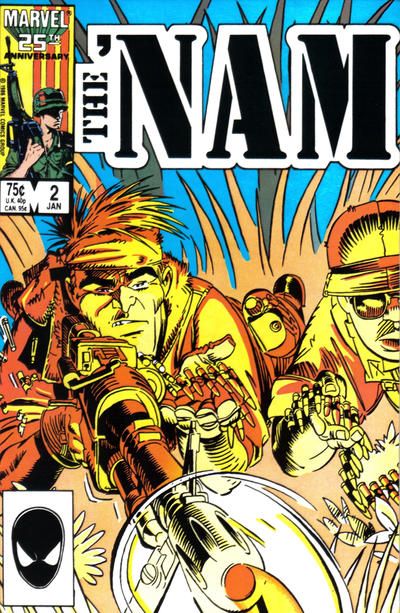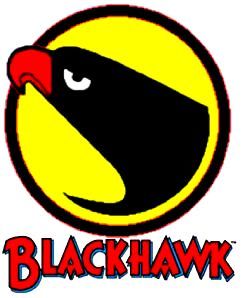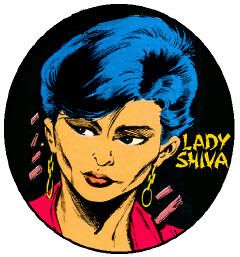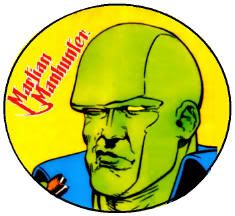
I've been rereading Classic X-Men via my omnibus edition, which I've been very happy with. For each reprint, there's an orange page with black text that offers the original cover and a synopsis for the 1970s X-Men issue. As I've gotten older, my tolerance for the quirks and excesses of Bronze Age comics has worn thin, so I don't anticipate ever revisiting that material in full. I much prefer being given the plot and a gallery of all the revisions made to the material in 1986, then enjoy the new character-focused short story by a more mature and confident Chris Claremont. I favor that to suffering through a monster of the month plot last issue, where Cyclops accidentally unleashed demons that Storm has to put away, or this issue's revival of Eric the Red. I do feel bad for Havok and Polaris though, a reasonably normal and loving couple constantly sucked into the dark vortex that was Scott Summers' drama. Alex feels bad about getting adopted and leaving Scott behind at the orphanage, but like, wouldn't you have, too? The back-up involves Colossus' very brief romance with a defecting Russian ballerina, and how despite twice saving her from thugs, he's rejected for being a mutant. Piotr comes off as both soulful and dense for wasting a day on the beach, contemplating whether a man of steel like himself has a heart worthy of love. It was still a good one, and also, the negative space on the back cover finally allowed me to notice that Bolton has been numbering each cover as part of his signature. #5 in an ongoing series!
Elfquest #18 was full of palace intrigue, and I'm struck by the Tolkien of it all. Yeah, they're all more or less elves, but there's the shorter Wolfriders pitted against the taller telepathic ones on winged mounts, and then there's the ones that are part bat, and only one can still produce children, melting the heart of the king of the other ones, and yadda yadda. Look, it was sexy half-naked slender myth creatures in a fantasy soap opera. X-Men wasn't all that different.
Unicorn to Wolverine in The Official Handbook of the Marvel Universe #14 pretty much marks the last proper issue of the Deluxe Edition. The other six issues are more specialized interests, where this one still looks at the breadth of the MCU. We got your Art Adams, Mike Zeck, Bill Sienkiewicz, John Byrne, Kerry Gammill, Bob Layton, and Paul Smith. The ones hitting it out of the park are Jerry Ordway's Vision, and if you can believe it, Sandy Plunkett's Will O' The Wisp.
X-Factor #12 seemed to be a try-out issue for Marc Silvestri, given that he would soon take over X-Men from the departing John Romita Jr. after a slew of high quality fill-ins. It inhabits an interesting space as a Mutant Massacre aftermath, that reintroduces Boom Boom post Secret Wars II, and makes a point at picking at the flaws of the mutant exterminators cover that would soon be abandoned. You've also got Apocalypse developing his Four Horsemen, and the progression of the crippled Angel subplot that will play into next year's mutant crossover.
Louis Williams did not have much of a career. On a quick search, I couldn't find any information on him, beyond a single issue's work on about three comics, an incomplete Speedy serial in Action Comics Weekly, a two-issue mini-series devoted to The Punisher's I.T. guy, and his five issue run on Daredevil. He did the Klaw fill-in with Steve Englehart, and then a pair of two-parters with Ann Nocenti that had to be separated by two fill-in stories by other artists. I have to assume the dude was not up to speed for monthly comics, and he was likely hired for bearing a passing resemblance to David Mazzucchelli. A shame then, because his work hit me just right, and he's kind of my defining Daredevil artist. He makes Matthew Murdock just pretty and delicate enough for me to believe that her could pull the kind of ladies that he does who are willing to put up with his nonsense, but also sell the violence inherent in his alter ego. His work is perfectly grounded and realistic, and yet he can also delve into the surreal and the outright horrific demanded from him in a script like "Bad Plumbing" from Daredevil #239. Though the cover advertises a Jack the Ripper type with the bloody scrawl "Rotgut was Here," Williams renders the serial killer a disturbing, pathetic creep driven to murder by various mental pathologies. Rotgut appears to be an African-American Albino, and in my experience, most comic artists struggle with an accurate representation of a regular Black person, but Williams excels at rendering such a tricky racial nuance. Rotgut isn't meant to be a credible or recurring threat to our hero, but as the centerpiece for Nocenti's exploration of a particular type of zealot that has only proven more of a concern for society today than he was nearly forty years ago. As I've mentioned, I didn't delve into the more highly regarded Daredevil material for a few years yet, so this was the interpretation that finally drew me onto the title, and which I still compare other runs against.
The 'Nam #2 was bought by my half-brother and read by me. This title should maybe come up more as an early influence on Western decompressed, cinematic storytelling. Like the New Universe, this book takes place in real time, jumping a month between issues. Unlike anything at the New U, this is drawn by one of the all time great comics artists at the peak of his powers, so the book doesn't feel the need to be written so densely as to serve as an installment in a novella in order to encourage repeat business. Michael Golden is killing it here like--well, like the Army kills that V.C. patrol, or like Sergeant Polkow would like to kill his superior when he intentionally puts his squad in harm's way as payback for a personal slight. The book looks so good, and is such a fine example of visual storytelling, that Doug Murray refuses to cover much of it with dialogue or captions, meaning you can read the thing in about five minutes.
After two exceptional issues of Strikeforce: Morituri, the third was a shockingly basic super-team comic. Purple prose, arch dialogue, straining to work in both real and code names while summarizing each character's power. This could have been any period X-Men knock-off, though the science fiction elements lend more towards Levitz Legion of Super-Heroes, aside from a horror element that sets it apart somewhat. It's a perfectly fine example in that class, with nifty costume designs on display and variations on fastball specials executed, but it's hardly transcending standard Marvel fare in the way it was previously

















No comments:
Post a Comment